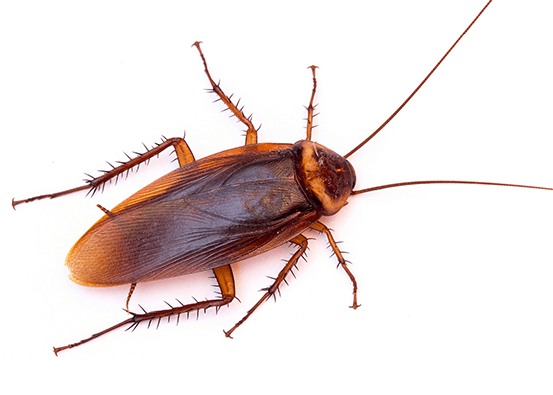

What Does a Cockroach Look Like? Understanding Their Anatomy
Cockroaches are often regarded as the quintessential household pest, notorious for their resilience and capacity to thrive in environments that many other species would find inhospitable. So, what does a cockroach look like? Their appearance, behavior, and biology have been subjects of extensive study in the fields of entomology and pest management. Understanding what cockroaches look like, how they behave, and how they interact with humans and their environment can be crucial in managing infestations and preventing future problems. You can find more information on their anatomy at resources like PestWorld and Entomology Today.
The Physical Characteristics of a Cockroach
One of the most prominent features of cockroaches is their highly specialized body, designed for survival in a wide range of environments. The cockroach body is flat and oval-shaped, which enables them to squeeze into narrow cracks and crevices that would otherwise be inaccessible to other insects. This body shape is a defining feature of the Blattodea order, the group to which cockroaches belong. So, when you ask, what does a cockroach look like?, you are looking at an insect whose body is both versatile and resilient. Their size can vary widely depending on the species, ranging from just over half an inch to nearly four inches in length. For further details, refer to The University of Florida’s Entomology Department.
The exoskeleton of a cockroach is tough and made of chitin, which provides both protection and structure. The outer body of cockroaches often appears smooth, but a closer look reveals small sensory structures embedded in their carapace. These sensory hairs are responsible for detecting changes in air currents, which is part of their heightened awareness of predators or other threats. The physical durability of their exoskeleton also plays a crucial role in their survival, as it helps them endure extreme conditions, including dehydration and exposure to toxins. To learn more about how cockroaches adapt, check out National Geographic’s coverage on the resilience of cockroaches.
Most cockroaches, especially those commonly encountered in human environments, have wings, although their flying ability can vary. The American Cockroach (Periplaneta americana), which can grow up to three inches in length, has well-developed wings that allow it to fly short distances, typically when startled. However, many cockroaches, such as the German Cockroach (Blattella germanica), are not strong fliers and tend to scurry rather than take flight. For more on cockroach behavior, the CDC provides valuable information.
Sensory Features of Cockroaches: Antennae and Eyes
When asking what does a cockroach look like?, it’s crucial to also look at their sensory features. The long, threadlike antennae of cockroaches are one of the most notable aspects of their anatomy. These antennae, which are often longer than the body itself, serve as highly sensitive sensory organs. The antennae help cockroaches sense food, moisture, and the presence of other cockroaches, as well as perceive threats such as changes in light or vibrations in the surrounding environment. The sensory hairs on the antennae are so sensitive that they can detect subtle air movements, giving cockroaches a highly developed sense of awareness. For more on cockroach sensory systems, refer to Entomology Today’s article on antennae.
The eyes of cockroaches are compound eyes, meaning they are made up of numerous individual lenses, each contributing to the insect’s overall field of vision. This structure enables cockroaches to detect motion in their environment very effectively. Their vision is not particularly good in terms of detail, but they are adept at sensing movement in low light, which is why cockroaches are most active at night. Additionally, their eyes allow them to detect predators and navigate dark spaces. Learn more about how cockroaches use their vision in this scientific paper on cockroach vision.
Interestingly, while cockroaches do have eyes, they rely more on their antennae and tactile sensors to gather information about their surroundings. Their reliance on other sensory mechanisms, such as chemoreception (the ability to detect chemical signals), means that they are often much more aware of their environment than humans might assume. This heightened sensitivity plays a key role in their survival, as they can detect food, mates, and predators long before they are visible. The University of California offers a deeper dive into their sensory systems.
The Behavior and Ecology of Cockroaches: Adaptability and Survival
Now that we’ve explored what does a cockroach look like?, it’s important to understand how this appearance relates to their survival. Cockroaches are opportunistic feeders and can survive in a wide range of habitats. While they prefer warm, dark, and damp environments—making kitchens, bathrooms, and basements prime real estate for infestations—they are highly adaptable creatures. They can live for extended periods without food and water, though they are most active in environments that provide easy access to both. For an interesting study on their survival abilities, check out Smithsonian Magazine’s article on cockroach endurance.
Cockroaches are nocturnal creatures, with most species being primarily active at night. They are not social insects in the same way ants or bees are, but they do exhibit some communal behavior. For example, cockroaches often gather in groups, particularly in dark, moist areas where they find food and shelter. German Cockroaches, for instance, tend to cluster together in kitchens and bathrooms where they can access food scraps and moisture. Their tendency to gather in large numbers often leads to a significant increase in their population if left unchecked. Learn about cockroach behavior in urban environments through this study by the National Pest Management Association.
Cockroaches are also known for their rapid reproductive rates. Female cockroaches produce egg cases called oothecae, which contain several dozen eggs, depending on the species. These egg cases are often hidden in dark corners or crevices, and once the eggs hatch, the young cockroaches (nymphs) emerge and begin foraging for food and shelter. The reproductive capacity of cockroaches is one of the primary reasons why they are such persistent pests. Certain species, such as the American Cockroach, can produce multiple oothecae over the course of their lifetimes, each containing dozens of eggs, leading to rapid population growth under favorable conditions. For more on cockroach biology, check out The Entomological Society of America’s guide to cockroach life cycles.
Species-Specific Features: What Does a Cockroach Look Like Across Species?
While there are certain universal traits that cockroaches share, the question what does a cockroach look like? can have different answers depending on the species in question. Cockroaches come in a variety of species, each with its own set of distinguishing features. The most common species found in residential and commercial settings include the German Cockroach, American Cockroach, Oriental Cockroach, and Brown-Banded Cockroach. Understanding the differences between these species can help in identifying a cockroach problem and taking appropriate action. Check out this detailed guide from the University of California.
- German Cockroach: One of the smallest and most pervasive cockroach species, typically light brown with two dark stripes running down the back of its head. They are often found in kitchens and bathrooms, as they thrive on food and moisture. Unlike some other species, the German Cockroach is more inclined to stay indoors and is a major vector of disease in human environments. It is commonly associated with foodborne illnesses and bacterial infections, particularly because of its tendency to scavenge in unsanitary conditions. For more on identifying German Cockroaches, see this resource from the CDC.
- American Cockroach: As one of the largest cockroach species, the American Cockroach is reddish-brown with a yellowish figure-eight pattern on the back of its head. It is often found in warm, humid environments such as sewers, basements, and large buildings. While capable of flying short distances, it prefers to scurry quickly across the ground, making it easily recognizable due to its size and rapid movements. You can learn more about this species from The University of Florida’s Extension Services.
- Oriental Cockroach: Sometimes referred to as “water bugs,” the Oriental Cockroach is dark brown to black in color and has a shiny, almost greasy appearance. Unlike other species, the Oriental Cockroach prefers cooler environments and is often found in basements, crawl spaces, and around drains. This species is not a strong flier, but it is highly resilient and can withstand colder conditions than many other species. You can read more on this cockroach at PestWorld.
- Brown-Banded Cockroach: The Brown-Banded Cockroach is a small, light brown species with dark bands across its wings. Unlike other cockroach species, it tends to live in higher places, often found on ceilings, behind furniture, or in electrical appliances. Its presence is particularly noticeable in areas with higher indoor temperatures, such as homes and office buildings. Explore more on this cockroach through this article by Penn State Extension.
For an in-depth comparison of cockroach species, refer to this University of Florida Extension guide.
Impact of Cockroaches: Health and Economic Consequences
While the physical appearance of cockroaches is often the first thing that people notice, the question of what does a cockroach look like? extends beyond mere aesthetics. The presence of cockroaches can have a profound impact on human health and wellbeing. As vectors of bacteria and pathogens, cockroaches are associated with the spread of diseases such as salmonella, E. coli, and gastroenteritis. Their droppings, saliva, and body parts can also trigger allergic reactions and exacerbate asthma, particularly in children and individuals with preexisting respiratory conditions. For further information on health impacts, visit The World Health Organization’s research on vector-borne diseases.
The economic cost of cockroach infestations can be significant as well. In commercial settings such as restaurants, hotels, and hospitals, cockroaches can cause contamination of food products, leading to costly recalls, lawsuits, and damage to a company’s reputation. For homeowners, the presence of cockroaches can lower property value and may lead to costly pest control interventions. Learn more about the economic impact of pests through this study by the National Pest Management Association.
Conclusion: Identifying and Managing Cockroaches
As you’ve seen throughout this article, what does a cockroach look like? depends on a variety of factors, including species, environment, and developmental stage. Understanding the appearance and behavior of these pests is crucial for effective identification and management. Given their resilience and adaptability, preventing cockroach infestations requires consistent sanitation, sealing entry points, and early intervention. For further resources on controlling cockroach populations, explore this detailed guide from the CDC or consult pest management advice from experts at PestWorld.



